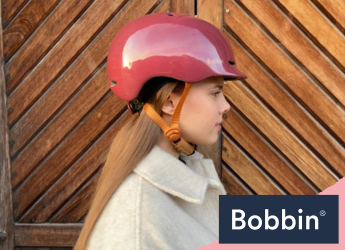Why Do Some Bike Helmets Have Peaks?
So you’re cruising down your favourite cycling route. The wind in your face and the thrill of the open road ahead. Suddenly, the sun peeks out from behind a cloud, blinding you. Or imagine rain starts drizzling down, obscuring your vision. That’s when you might find yourself grateful for a small yet crucial feature of your bike helmet — the peak.
But why do some helmets have peaks while others don’t? In this article, we’re about to uncover the science behind this component. Join us as we discover why peaks matter in the world of cycling for safety and comfort.
Understanding Bike Helmet Features
Bike helmets are equipped with a myriad of features. Whether it is a childrens bike helmets or an adult bike helmet, these head gears enhance rider safety and comfort. Most boast strategically placed vents for airflow, keeping your head cool on hot days. They also come equipped with adjustable straps for a secure fit.
However, one often-underappreciated component deserves our attention: the helmet peak. This discreet but valuable feature plays a big role in the design structure of the headgear. For one, it shields your eyes from the elements and improves the overall riding experience.
In the following sections, we’ll delve deeper into the world of helmet peaks.
The Role of Peaks
The peak is what sets helmets with peaks apart from their peak-less counterparts. These angular extensions serve as a practical addition.
First, as mentioned, helmet peaks act as a shield against the elements. Picture this: you’re cycling on a hot and sunny day. The sun can be an annoyance, causing glare and affecting your vision - let alone the heat. This is where the peaks come to the rescue. Such features for adult bike helmets provide a valuable shade, reducing glare. Thanks to this, you can maintain a clear view of the road ahead.
Moreover, they prove invaluable in fending off raindrops. A sudden drizzle can quickly blur your vision, making the ride less safe and enjoyable. Helmet peaks divert rain away from your eyes. This allows you to stay focused and maintain visibility even in wet conditions.
Additionally, these extensions offer protection from debris encountered on off-road trails. They act as a barrier, preventing objects from directly hitting your face or eyes.
In essence, the inclusion of peaks in helmet design proves to be practical. The advantages it comes with also guarantee an improved cycling experience.
When and Where Are They Useful?
Helmet peaks prove especially beneficial in a range of situations. This makes them a valuable feature for cyclists, along with their trusty Bobbin bikes. Below are a couple of scenarios when and where this crown-like feature comes in handy:
Sunny days
On bright, sunny days, the sun can be blinding, making it challenging to see clearly. A helmet peak acts as a visor, providing shade and reducing glare. This enables you to maintain excellent visibility and focus on the road, in turn.
Rainy weather
In rainy conditions, raindrops on your glasses or directly in your eyes can be a safety hazard. Helmet peaks divert rain from your face, ensuring you can see clearly and ride safely.
Off-road adventures
Low-hanging branches and debris are common hazards for off-road adventures. But thanks to the peaks, you can ride in confidence, knowing your face and eyes are safe from these obstacles. Keep pedalling through on your hybrid bike!
Morning and evening rides
During dawn or dusk, when sunlight is at an angle, the visor can be particularly effective. Overall, it works by reducing glare and enhancing visibility.
All these have proved helmet peaks their worth, making them valuable to cycling gears.
Choosing the Right Helmet
When choosing between with or without a peak, consider your taste and intended use. Here’s some advice to help you make an informed decision:
Personal preferences
If you value unobstructed visibility and minimal weight, without a peak is your best bet. These helmets tend to be sleeker and offer a more aerodynamic design. They are suitable for road cycling enthusiasts, to add. Meanwhile, if you often ride in varying weather conditions or off-road, opt for a helmet with a peak. As you know by now, the design can provide valuable protection from sun, rain, and obstacles.
Intended use
Think about where and how you’ll primarily use your helmet. If you’re aiming for speed and efficiency, a peak-less helmet might be the better choice. Mountain bikers and commuters may enjoy the versatility and protection the peak offers.
Ultimately, your choice should align with the following:
- your riding style and preferences
- the environments you’ll encounter
Try both types if possible. Consider your needs to select the helmet that best suits your cycling adventures. When it comes to finding the right fit, our guide to “How Should Bike Helmet Fit” is worth a read.
Round-up
The humble helmet peak is far from an afterthought in cycling gear. It’s a small but significant feature that can greatly enhance your riding experience. Whether you opt for one with or without a peak, safety and comfort should be your top priorities. Regardless, always wear your Bobbin bike helmet whenever you hit the road or a trail.
Complement your headgear with our selection of cycling accessories featuring this bike bell. Up next on your reading list: Do Adults Need to Wear Bike Helmets?












